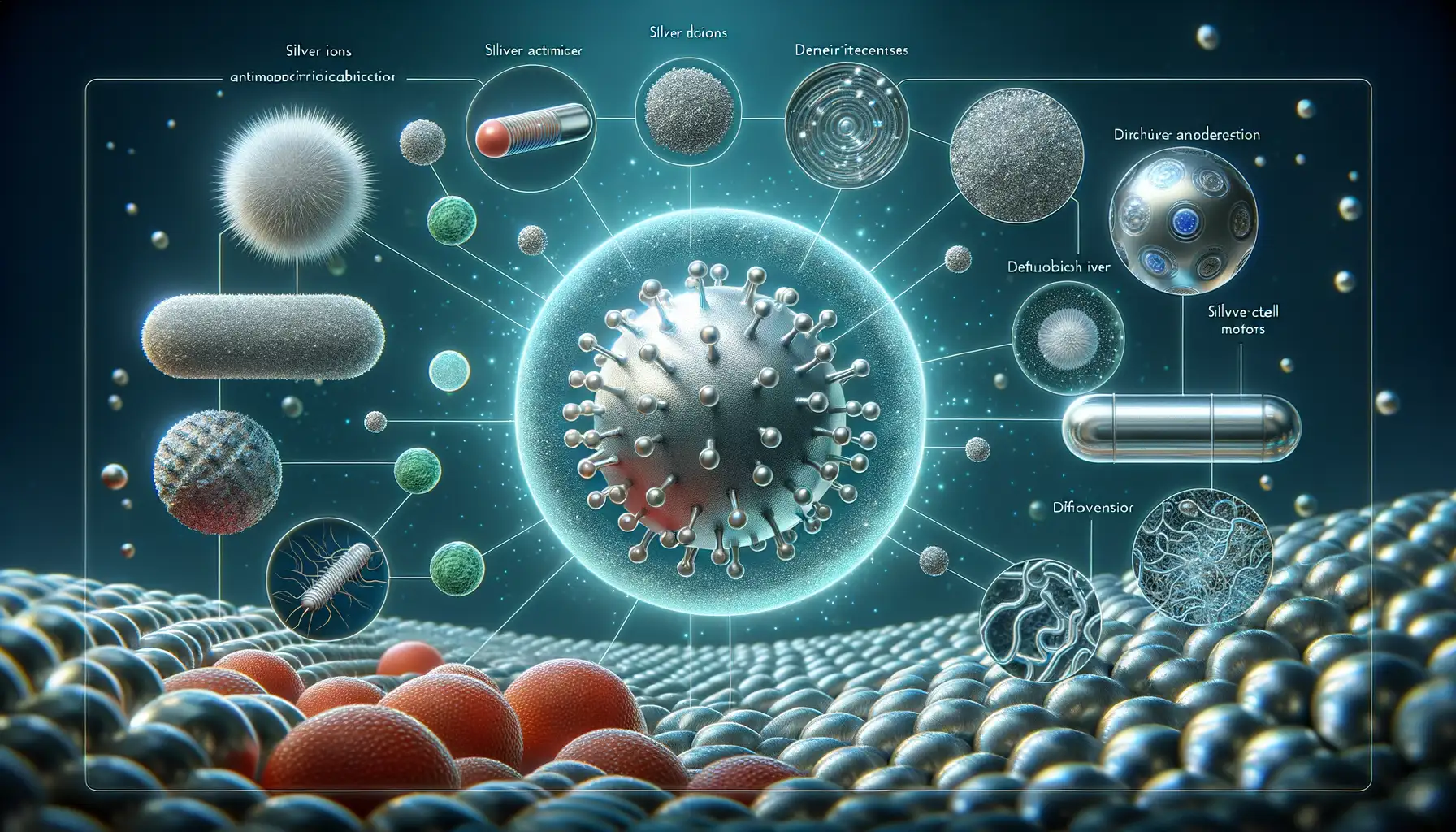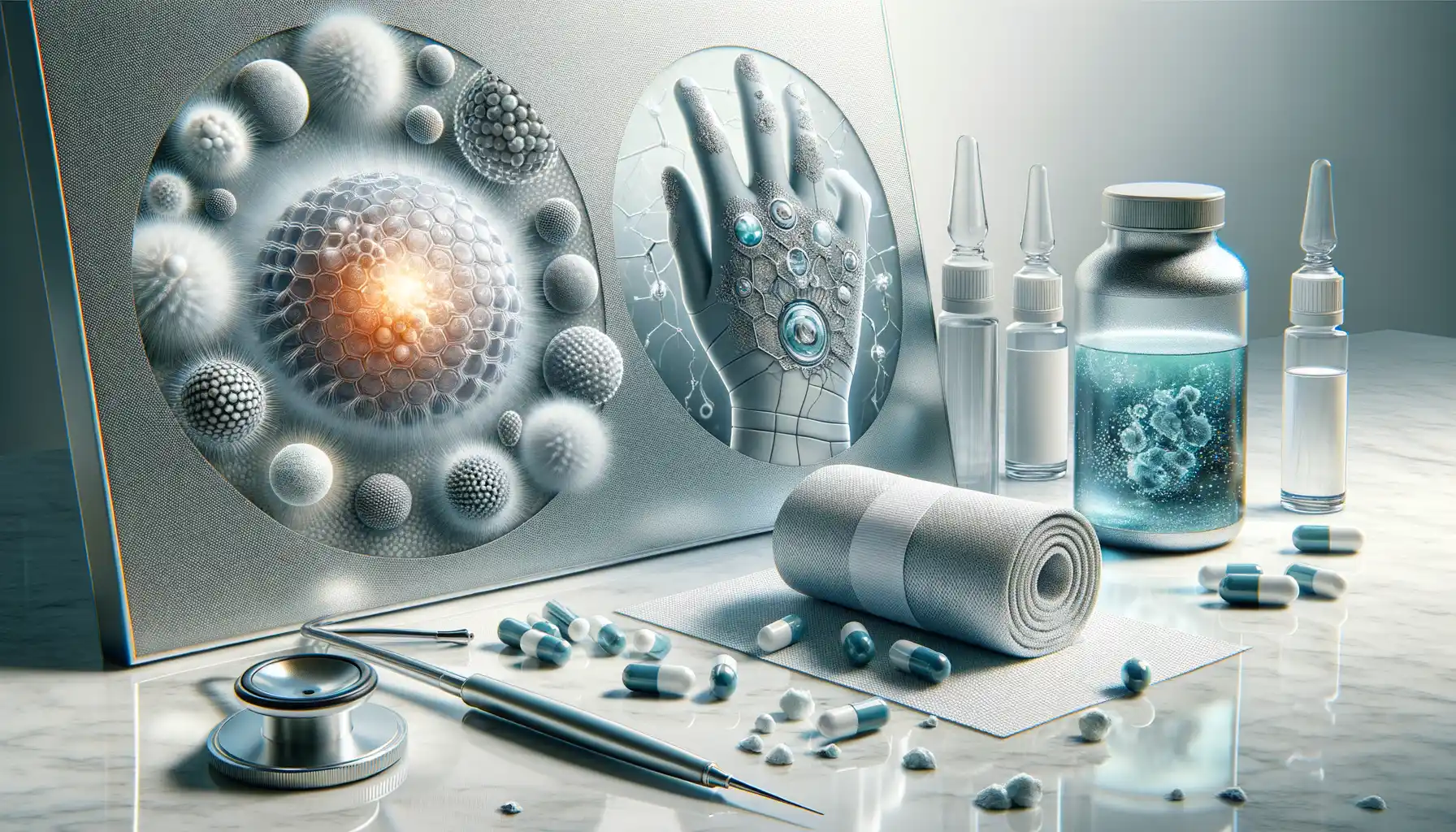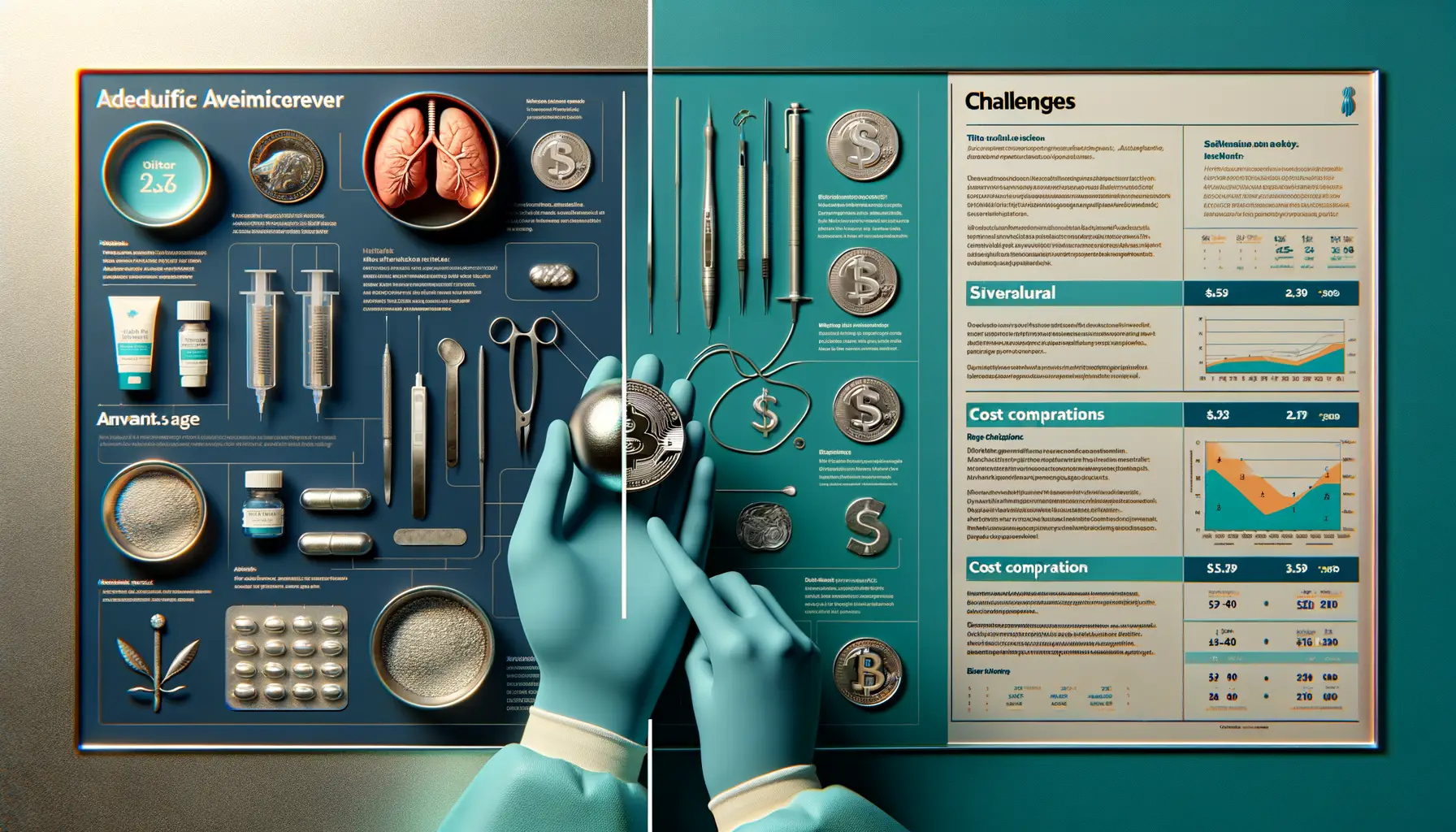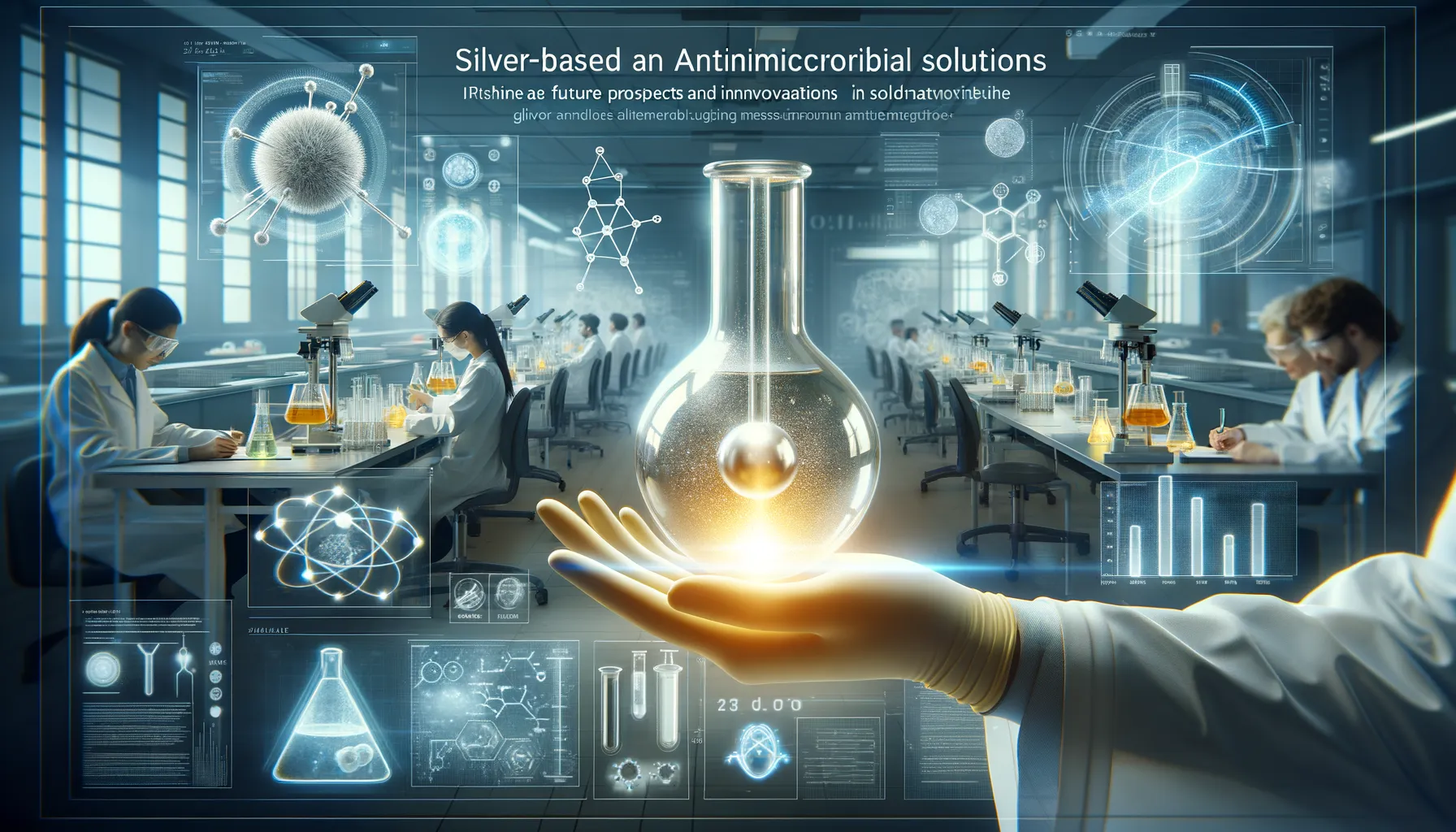Introduction to Silver in Medical Antimicrobial Use
When you think of silver, what comes to mind? Jewelry sparkling under the light, crisp coins jingling in your pocket, or perhaps the soft glow of an heirloom passed through generations? But what if I told you this precious metal has another, life-saving side—one that’s been quietly fighting infections for centuries?
The Ancient Secret Weapon: Silver
Silver isn’t new to the medical world—it’s a seasoned veteran. Long before we even knew what bacteria were, ancient Greeks and Romans used silver for its mysterious healing powers. They stored water in silver vessels and applied it to wounds, observing how their health seemed to improve. Fast forward to modern times, and science has caught up. We now know silver’s secret: it disrupts harmful microbes, rendering them powerless.
Why is silver such a rockstar in healthcare? Imagine it as a silent guardian, working tirelessly behind the scenes. Here are just a few reasons it’s earned its reputation:
- Broad-spectrum power: Silver targets a wide range of bacteria, viruses, and fungi without discrimination.
- Low resistance risk: Unlike antibiotics, which can lose their effectiveness over time, microbes struggle to outwit silver.
- Versatility: From creams to coatings on surgical tools, silver adapts to countless applications.
Modern Marvel with Timeless Appeal
Despite all our technological leaps, the allure of silver persists. It’s not just about tradition; it’s about results. Picture a burn patient receiving treatment with a silver-infused dressing that speeds up healing and prevents infection. Or imagine a hospital equipped with silver-coated catheters and implants, dramatically reducing the risk of contamination. That’s not science fiction—it’s happening today!
Silver might shine brightest in jewelry stores, but in hospitals, it’s a hero without a cape.
Mechanisms of Silver’s Antimicrobial Action

The Microscopic Dance of Silver and Microbes
Imagine a microscopic battlefield where silver takes center stage as the ultimate warrior. When bacteria, viruses, and fungi invade, silver ions (Ag⁺) swoop in with precision strikes, disrupting their very essence. It’s fascinating to think that something so small can dismantle an organism’s survival machinery.
How does silver do it? Like a multitasking hero, it:
- Penetrates microbial cell walls, causing leaks and chaos inside.
- Disrupts DNA replication, halting reproduction in its tracks.
- Inhibits vital enzymes by binding with proteins—cutting off life at its source.
This isn’t brute force; it’s a calculated operation. Silver interferes with the tiniest chemical signals that microbes need to thrive. It’s like rewiring their command center, leaving them powerless.
A Natural Shield with Precision Power
What makes silver truly remarkable is its versatility. Unlike antibiotics, which often target specific bacteria, silver has a universal approach. Whether it’s Staphylococcus aureus or tricky fungal pathogens, silver doesn’t discriminate. And guess what? Microbes rarely outsmart it, making resistance a rare foe.
Picture this: hospitals using catheters or wound dressings infused with silver. Every time a microbe approaches, those silver ions strike silently but effectively. It’s not just science; it’s life-saving magic in action.
Applications of Silver in Modern Medicine

Transforming Wound Care with Silver
Imagine a small, glittering defender packed into a bandage—this is precisely what modern medicine has crafted with silver-based wound care. From minor cuts to chronic ulcers, silver-infused dressings act like microscopic guardians, battling bacteria where it thrives most. The brilliance lies in its versatility. Whether it’s a hydrogel laced with silver nanoparticles or a foam dressing drenched in ionic silver, these innovations are revolutionizing healing.
Why? Because silver doesn’t just sit pretty. It actively disrupts bacterial growth, creating a hostile environment for harmful microbes to survive. Think of it as a constant, silent protector for wounds that refuse to heal on their own.
- Burn treatments: Silver sulfadiazine creams soothe and shield severe burns from infection.
- Post-surgical care: Silver-coated sutures reduce the risk of incisions going rogue.
Whether it’s stopping infections before they start or minimizing scarring, silver adds a touch of magic—both literally and figuratively—to modern wound care.
Medical Devices: A Silver Lining
You’d be surprised just how many medical devices today rely on silver for safety and performance. Catheters, pacemakers, even prosthetics—they’re no longer mere tools, but partners in our survival, fortified with antimicrobial properties. Picture this: a silver-coated catheter, preventing urinary tract infections during extended hospital stays. It’s a tiny tweak, but potentially life-saving.
In intensive care, silver-enhanced endotracheal tubes are changing the game by reducing ventilator-associated pneumonia. And dental implants? Many are now coated with silver, safeguarding against microbial invasions that could wreak havoc in your mouth. It’s science meeting ingenuity, ensuring that every piece of equipment placed inside the human body is more than just functional—it’s protective.
This isn’t just innovation; it’s a revolution driven by the humble, glimmering element we often overlook.
Advantages and Challenges of Using Silver in Healthcare

Why Silver Is a Lifesaver in Medical Settings
Imagine a world without infections spiraling out of control. That’s the promise silver brings to healthcare! Known for centuries as a natural warrior against germs, silver is now making waves in modern medicine. Why? Its antimicrobial properties are mind-blowing. It doesn’t just fight bacteria—it obliterates them by messing with their cell walls and disrupting their DNA. Think of it as nature’s microscopic bodyguard, tirelessly working behind the scenes.
If you’ve ever used a medicated wound dressing or a catheter lined with silver, you’ve witnessed its magic firsthand. Hospitals love silver-infused coatings because they reduce the risk of infection without relying solely on antibiotics. And with antibiotic resistance becoming a global crisis, silver might be the superhero we didn’t know we needed.
- Durability: Silver stays effective long after application.
- Broad-spectrum protection: It targets bacteria, fungi, and even viruses.
- Minimal resistance development: Microbes find it hard to outsmart silver.
The Flip Side: Challenges Worth Considering
But hold on—using silver isn’t all sunshine and roses. For one, there’s the issue of cost. High-quality silver treatments can send budgets soaring, especially in resource-strapped healthcare systems. And while it’s fantastic for short-term use, long-term exposure might result in potential toxicity, which raises eyebrows among researchers.
Some studies also suggest silver nanoparticles could accumulate in the environment. Imagine this: tiny particles lingering in water systems, possibly harming aquatic life over time. Plus, not every patient’s body reacts the same way to silver-based products—what works wonders for one might cause irritation for another.
So, is silver a miracle cure? Not quite, but it’s undeniably a game-changer in the world of healthcare.
Future Prospects and Innovations in Silver-Based Antimicrobial Solutions

Revolutionizing Healthcare with Next-Gen Silver Solutions
Let’s talk about the future—because when it comes to silver-based antimicrobial solutions, the best is yet to come! Scientists and innovators worldwide are diving into uncharted waters, pushing the boundaries of what this incredible metal can achieve. Imagine dressings that intelligently release **silver nanoparticles** only when an infection threatens or implant coatings that not only fight bacteria but also promote healing. Sounds futuristic? It’s happening now.
What’s truly exciting is how silver is teaming up with cutting-edge technologies:
- **Smart materials** that adapt to their environment, targeting infections without harming healthy cells.
- Biodegradable silver-infused polymers, reducing environmental concerns while keeping infections at bay.
- Silver-nano composites paired with AI algorithms to monitor wound healing in real time.
The Promise of Customized Antimicrobial Care
Beyond innovation, there’s something almost poetic about where we’re headed—personalized care. Picture this: a cancer patient receives a chemotherapy port coated with **silver-based biopolymers**, significantly lowering the risk of infection. Or a rural clinic using 3D printing to create silver-infused medical supplies locally, ensuring access for even the most underserved populations.
The true magic of silver lies in its versatility, paving the way toward safer procedures, quicker recoveries, and, ultimately, healthier lives. Isn’t it thrilling to think that something so ancient could define the future of medicine?
